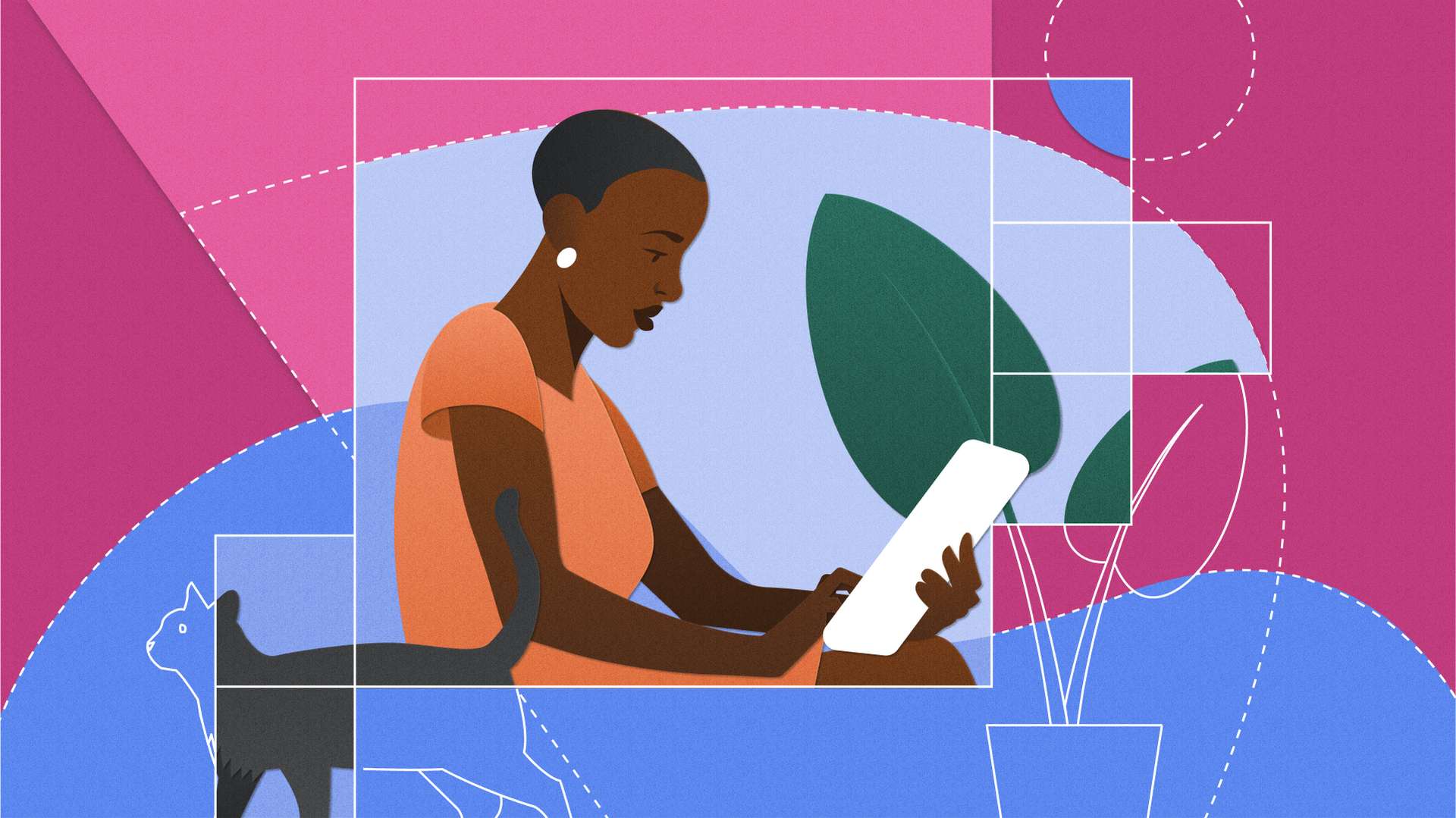Designers have the power to shape the cues and contexts that users experience. That’s where behavioral science can help. With a track record in rigorously tested interventions, behavioral science offers designers a new perspective on how to reduce biased behavior and advance equity in hiring.
Bias is often unconscious. As humans, we move through the world on autopilot. We respond to cues with learned habits that make life easier to navigate. While that may work most of the time, sometimes those habits can cause us to misjudge others, doubt ourselves, and shy away from risks. These biases in our behavior can have an especially negative impact on identity groups that face inequality, but small design choices can help create a more inclusive experience.
At Indeed, our primary users are job seekers and businesses, and research shows that unconscious bias can steer both groups onto paths that perpetuate inequities in the workforce. I’ve outlined three ways behavioral design at Indeed is advancing a more diverse workforce.
Set intentional defaults
Defaults are a powerful tool for influencing user behavior. For example, a 2012 study found that simply living in a country where driver’s license applications default applicants into becoming organ donors makes an individual five times more likely to become an organ donor. That’s because it takes energy to overturn a default. By setting defaults that reduce bias and promote more objective judgment, designers can build tools that encourage greater equity and fairness.
When a business launches a campaign on Indeed, they choose their hiring goal, provide job details, and add screening criteria. That’s where intentional defaults come in. As designers, we set the default flow to include specific Indeed Assessments that our research shows are most relevant to job performance. For example, a pet grooming business hiring a cat groomer would be presented with a small-animal care skills test that assesses aptitudes specific to the job. Default skills tests can make it easier for businesses to hire based on skills, rather than on qualities unrelated to job performance.

Build in flexibility
Job hunting can be incredibly stressful. When scheduling interviews between day-to-day obligations, job seekers’ plans can change without notice. How Indeed’s site responds to those unexpected needs can have an outsized impact on the people who face the highest barriers to employment. In addition to balancing other life responsibilities, many job seekers also have to manage the stress of not having enough money to pay the bills.
Behavioral scientists call this living in a state of chronic scarcity. Researchers have found that when we fix our minds on an urgent need, like an electricity bill or a car payment, it’s harder to focus and perform well on anything else. Just a hypothetical emergency car repair has been shown to cause the equivalent of a ten-point decrease in IQ for those making less than the median income.
Designers can limit the impact of a busy mind on those urgently seeking employment by building more forgiving designs. For example, job applicants may sometimes need to reschedule an interview because they’re balancing other responsibilities like homework, child care, and extra last-minute shifts at a current job. At Indeed, we make it easy to quickly reschedule interviews at the last minute. Building in this flexibility helps job seekers feel positive about using Indeed for their job search.
Promote respect for users
When job seekers run up against cultural stereotypes, they may question whether they hold the relevant identity for a particular position - which can deter their decision to pursue an open position. Behavioral scientists call this experience stereotype threat, which can lead to unconscious questioning, self-doubt, and poor performance. A 2019 study found, for example, that simply saying “Let’s do science,” rather than “Let’s be scientists” to children ages 4 to 9 increases girls’ interest and persistence in a game demonstrating the scientific method. These neurological patterns stay with us into adulthood and can impact our careers.
Many users look for signals of whether a system respects their experience. For Indeed, the ways our systems express respect - or fail to - can determine whether certain groups feel motivated to apply to roles, persist through each step in the hiring process, and perform well on assessments and in interviews. Any design choice that leads job seekers to question whether they hold the relevant identity can hinder the job seeker’s confidence in finding the right work and prevent employers from finding a quality candidate quickly. Alternatively, researchers have shown that promoting diverse, positive mindsets about who succeeds helps all job seekers demonstrate their full potential.
Indeed encourages employers to be respectful of the job seeker through Employer Assist. When posting a job, employers who opt-in to a pre-approved rejection message can select a response timeframe (i.e. 7, 10, or 14 days) that starts when each candidate submits their application. After that period, if the employer did not show interest in a candidate, Indeed automatically sends a short, direct message to the candidate letting them know the employer is not interested. While rejection emails can be tough, clear feedback on their application can help a job seeker stay motivated to continue their job search.
The alternative is the “inbox rot” or silent rejection when an applicant never receives a rejection or approval message. This kind of ghosting can reinforce the stress and ambiguity that goes with searching for a job. For those concerned about whether their race, age, gender, or other identity contributed to this rejection, never hearing back can seriously undermine motivation to continue searching for a job.
Instead, Indeed builds respect for the job seeker into our system, recognizing the psychological harm and logistical inconvenience a silent rejection can have on a job seeker’s motivation. Sending even a short message can reduce the sense of threat and help job seekers stay motivated. A simple response to an application can make the difference between reinforcing negative identities and motivating a job seeker to keep applying.

Design for inclusion
At Indeed, even small design features can support more equitable outcomes for job seekers by supporting employers to reduce or remove bias in hiring and create an environment where all job seekers are more likely to get jobs.
Acknowledging our unconscious behaviors goes a long way in building more equitable products. Designers’ choices are about so much more than creating an easy-to-use experience. By considering the effects of how we set default options, allow people to change their minds, and follow through with good communication, we can build trust and show respect to people who interact with our designs.





